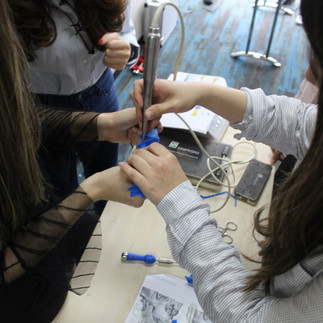Technology continues to be essential to every industry, and its importance in medicine and healthcare cannot be understated. Despite healthcare measures becoming focused mainly on COVID-19 over the past year, other areas in medicine continue to advance – this is true for specializations like surgery. Case in point, there has been a steady increase in surgeries involving robotics and computer assistance over the past decade, which is still considered revolutionary technology in the field.

As diseases and treatments grow more complex over time, computer-assisted technologies make it possible for surgeries to become more sophisticated and meet patients' needs. In addition, A recent study[1] indicated that COVID-19 led to 28 million cancelled or postponed surgeries worldwide in 2020 with millions of surgeries moved into 2021 Hopefully, we are close to overcoming the pandemic situation worldwide. All of the elective surgeries that have been postponed for a year or more will potentially lead into a large backlog of cases for surgeons. Considering this urgency, digital surgery can come up to the plate and provide a relief for surgeons and hospitals, by effectively increasing their productivity by reducing surgical time, and by reducing the complication rates.
Digital surgery can come up to the plate and provide a relief for surgeons and hospitals
Computer applications in surgery
Computer-assisted surgical processes start with planning, where preoperative modeling and anatomy visualization are conducted to determine the corresponding surgical steps. In such procedures, advanced image-based planning, for instance, involves the design of 3D-printed patient-specific implants and aids. 3D printers achieve this through their hardware, which use multiple grid circuit boards to accommodate component placements. This is essential for component-heavy machines like 3D printers, which work by using computer-aided designs to build objects from scratch using materials like molten plastic or powders. 3D printing has various applications in surgery, including the creation of custom surgical tools, reproduction of anatomical and implantable parts, and templates for specific surgical actions.
There are other applications of computers in surgeries, including digital 3D modeling. Customized software is used to create a model of each patient’s spine that provides the surgeon with a digital map to follow during surgery, a process called surgical navigation. This makes procedures such as spinal fusion surgery much more accurate as orthopedic surgeons can use the 3D rendering of the patient’s spine to position the metal plates, pedicle screws, and rods accordingly.

Other surgeries also involve surgical navigation software that is used with infrared cameras and instruments embedded with light-emitting diodes. The use of these tools in spinal and reconstructive surgeries is rapidly expanding, and the technology is still considered “revolutionary.” Apart from the tools themselves, experience is vital for AI to develop new systems that are applicable for other surgical applications. Machine learning can be used to reduce complications and the development of robotic systems to increase the range of procedures that can be done.
The future of computer-assisted surgeries
The use of capsules and microbots Thanks to computer-assisted technology, capsules are now used for diagnostic tests, drug delivery, and surgeries. They cause less tissue damage and provide freedom of movement, resulting in applications like bleeding detection. And while they have not been actualized yet, microbots hold plenty of potential for surgery in that incision may not be required at all as they would work within the circulatory system. Increased safety and reduced costs Advancements in computer-assisted surgeries are also expected to lower manufacturing costs for 3D printers and increase their overall accessibility. New techniques and materials will also be more available for implants and other printed biological structures to better recreate the function of real human tissues and organs. 3D tech in medical education With better 3D technology come more accurate anatomical models that can be used to train future surgeons. These models continue to aid surgery teams in sharing accurate information to make better decisions in surgery. Computer-assisted surgeries are the road to safer, more effective, and more efficient procedures. And with more advancements in software technology, doctors can treat even the most complex of conditions with more precise surgical instruments and processes.
Penned exclusively for techfit-ds.com
by Jodie Benet
References
[1] COVIDSurg Collaborative. (2020). Elective surgery cancellations due to the COVID-19 pandemic: global predictive modelling to inform surgical recovery plans. British Journal of Surgery, 107(11). https://doi.org/10.1002/bjs.11746






Comments